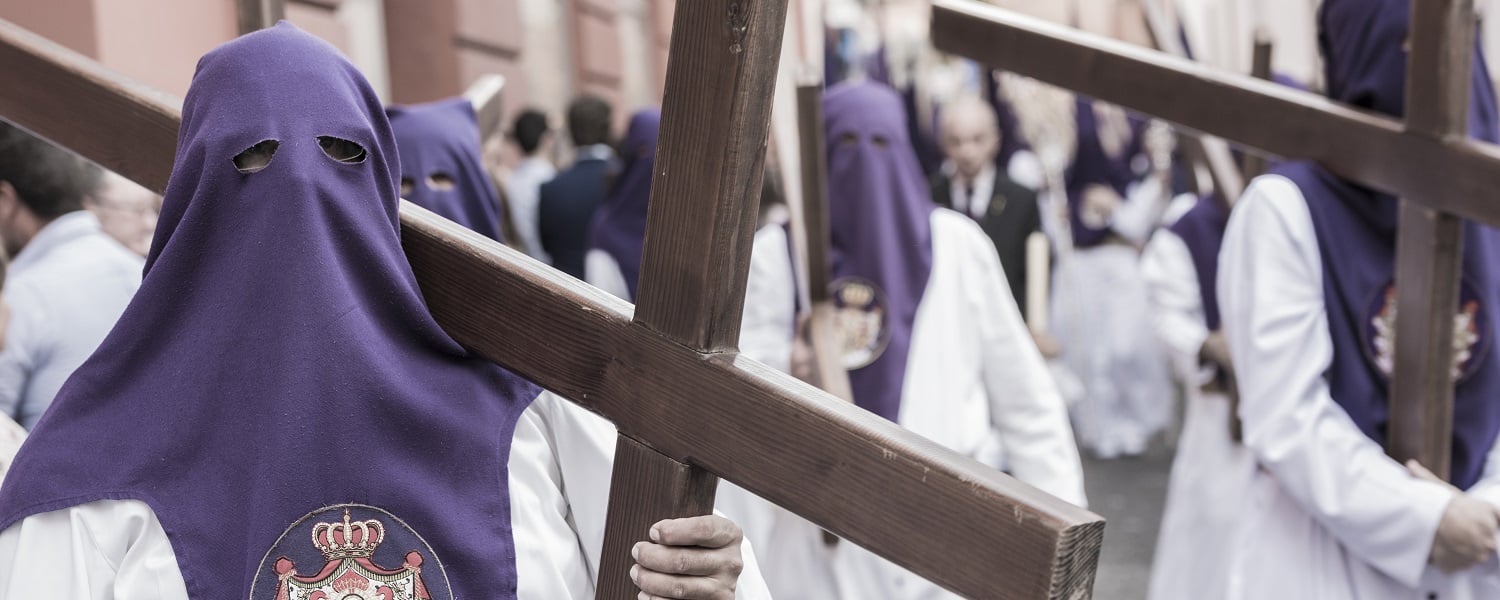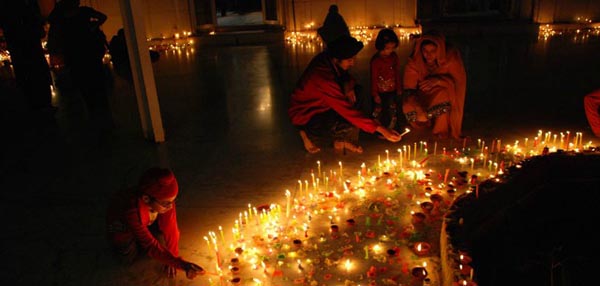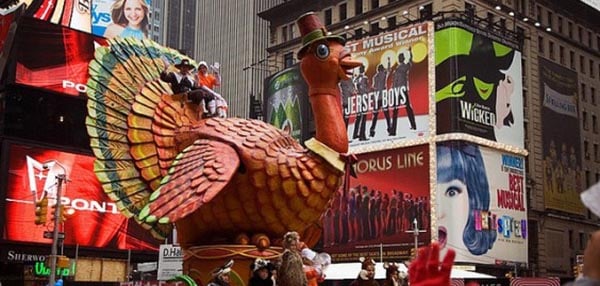![]()
As travelers we wouldn’t be doing our jobs if we didn’t seek something more than just a quick jaunt away from the familiar.
There are always questions. Questions that go much deeper than our selfish desire to escape the monotony of home. We need to understand where a place came from and who the people were who turned some dirt and trees in one area into a city of millions.
It was Henry James who said that it takes an endless amount of history to make even a little tradition - and that is perhaps where our answer lies.
Understand and partake in the traditions of a place and you have the key to the front door. So go on, open it and explore.
Pick your tradition

The History of Halloween
To understand the origins of what we today call Halloween (All Hallows Eve, the evening before All Hallows’ Day) one needs to look into the folk customs of the Celtic speaking countries even before the arrival of Christianity. Samhain (sah-win) was a festival marking the end of the harvest season, the beginning of winter,and a universal shift to the ‘darker half’ of the year where boundaries between this world and another thinned and spirits were free to come and haunt unimpeded - a far cry from today’s Batman costume and Jagermesiter shot tray combination.
This was a time of immense fear. The offerings, bonfires, and all sorts of crazy rituals meant to appease angry spirits are a great testament to that. One such ritual was guising: a tradition of going house-to-house reciting pagan verses personifying old spirits by wearing a disguise - and asking for food. Only then could they be protected from them.
Though these traditions were originally shunned overseas by the Puritans of New England, mass immigration to America from Ireland and Scotland helped Halloween gradually become a holiday celebrated by Americans of all racial, social, and religious backgrounds. The old supernatural disguises were soon replaced by celebrities, cartoon characters, and just about any character in fiction. The old foods were replaced by commercial sweets. In the end, this originally small pagan ritual has found global notoriety.
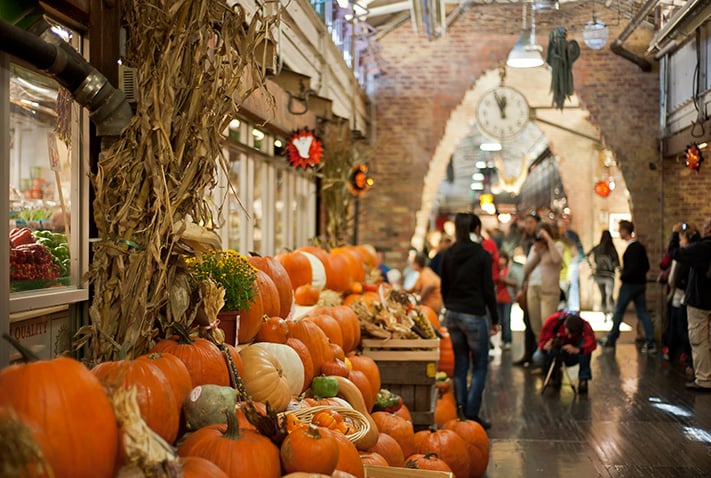
Fun Facts
And here we are at present day - with infographics breaking down the most popular hashtagged Halloween costumes by state it’s clear America has gone Halloween crazy. Consumer spending pushes $8 billion a year and the average person will spend about $93 on Halloween celebrations including costume, candy, and decorations. It’s now the second biggest commercial holiday in America after only Christmas.
That Americans spend billions on a (in its current state) meaningless holiday comes as no surprise, but the degree to which Halloween has shaped the country itself is actually quite staggering if you’re to believe the stories.
It’s said that candy manufacturers were some of the main lobbyists that helped extend Daylight Savings Time into November, allowing children an extra hour of daylight to collect more candy while trick or treating.

The traditional of collecting candy door to door has existed in America since at least the 1920’s - much to the chagrin of worried parents who have forever lived with horror stories of razor-blade candy apples and poisoned sweets. The good news? Of the two recorded cases of Halloween candy poisoning in American history both cases involved relatives - one, an accidental consumption of an uncle’s heroin stash and the other a father trying to cash in on a life insurance policy. With 41 million annual trick-or-treaters between the ages of 5 and 14, over nearly a hundred years it’s safe to say Halloween is safe, so why not to get out there and experience it for yourself? ?
Halloween tourism is as good an excuse as any to get abroad and if you find yourself in the good ol’ US of A at the end of October there are a few spots you’ll want to hit to get a front seat for all the madness.
Destinations
Tips
Proper Halloween travel starts before you’ve even left the house. As we move into colder seasons the weather can be quite variable in places - did you know that New York’s highest average windspeed takes place on October 31st? It’s also the driest day of the month with a relative humidity of 62%.
We’re no meteorologist but it’s a safe bet to bring a windbreaker. Hollywood’s average temperature on the other hand is 28°C. Swimsuits? Check. Making sure you check a holiday weather website to understand the peculiarities of a place before you go can save you lots of trouble later on, especially if you’re just dying to show the world the ‘weather sensitive’ costume you’ve got.
Speaking of costumes, if you’re looking for one the conventional move would be to check out a few neat little costume shops once you’ve arrived. First of all, the idea of a cute little mum n’ pa costume shop is far from realistic. Americans head to national chains like Walmart in droves for their purchases and you won’t be any different.
Buying online gives you an unlimited selection of costumes (making your Zombie-Superman-Donald Trump idea feasible) which will make your character that much more memorable. The prices are also undoubtedly lower. And who wants to waste precious Halloween celebration time looking for costumes? Nobody. Buy online to save time and money.
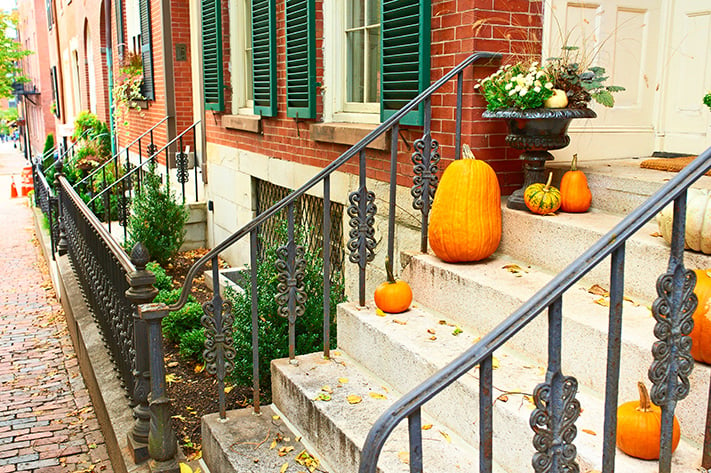
When to go
We'll tell you the best time to visit New York. Take notes and start preparing your trip!


Do you feel like travelling?
Discover the best flight offers to fly to New York, in USA

The History of the Lantern Festival
You’ve probably heard of this ancient Chinese tradition through social media photo sharing but the problem with photos is they offer little background information to one of the world’s biggest festivals.
Held on the fifteenth day on the first month of the lunisolar calendar it has evolved to be the end of the Chinese New Year celebrations and the Chinese equivalent of Valentine’s Day all in one.
There is a list of Chinese Lantern Festival origin stories as long as the Great Wall. The basic assumption is that it originated to celebrate the dwindling darkness of winter and the resulting ability of citizens to stay out later at night. However, a quick look shows the festival to have different significance over different dynasties, historical figures, and religious denominations:
The First Emporer of China - Emporer Qin Shi Huang ordered splendid ceremonies to appease the god of heaven Taiyi, who had sixteen dragons to inflict drought, storms, famine, and pestilence on humanity.
Taoism - Taoist god Tianguan’s birthday falls on the fifteenth month of the first lunar month and it’s said that celebrations were made to entertain him and bring good luck.
Buddhism - After learning that monks lit lanterns to honour the Buddha, a Han Dynasty emperor ordered others to do the same.
Ancient Warriors - Rebel fighter Lan Moon lead a coup against a tyrannical king and died after successfully storming the city. The festival was commemorated in his honour.
Go figure! All the stories have led to the modern Chinese Lantern Festival where people hang lanterns outside their homes, wander the streets searching for love on nights without curfew, eat a ton, solve puzzles, and have well-needed family reunions.
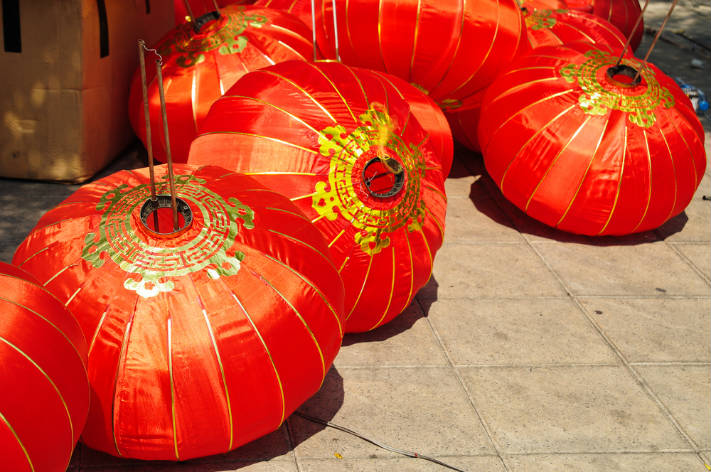
Fun Facts
It’s strange to think that the 2,000 year old lantern festival nearly stopped altogether in the middle of last century. If it weren’t for schoolchildren and their almost religious dedication to the holiday it would have all but disappeared.These days though the festival has not only revitalized itself in China but has spread throughout the world with places like Japan, Korea, Hawaii, and even New Zealand all offering up their take on it.
In China the types of lanterns (fixed, held, floating, or flying) typically differ by region but a red oval shape with red or golden tassels is considered the standard. The colour red is a symbol of joy and vitality and was traditionally associated with the announcement of a wedding or birth. The symbolic nature of the colour white? Oddly, death.

Lantern makers traditionally write riddles on small pieces of paper and attach them to the lanterns to make the festival more lively and entertaining. An example that translates well in English is what runs around the house but doesn’t move? Have a good think now. The answer will be waiting for you later in the article.
The appreciation of lanterns has always been a great conversation starter for members of the opposite sex and for this reason the lantern festival is a period of matchmaking in Chinese culture.In Hong Kong, Malaysia and Taiwan it has been commercialized as the Chinese Valentine’s Day.
An essential part of any self-respecting lantern festival is the yuanxiao - a boiled, fried, or steamed glutinous rice flour ball stuffed with sugar, rose petals, sesame, bean paste and more. Families traditionally enjoy these treats at night while appreciating the full moon. The round shape of the food symbolises reunion, harmony, and happiness.
OK, thought about the answer to the riddle yet? The answer: a fence.
Destinations
Naturally tourists flock to major cities and you’ll find no shortage of lantern related fun in Beijing where famous pedestrian only Qianmen Street gets dressed up for the occasion. The three day lantern festival here counts over 1000 lanterns and is highlighted by the lighting ceremony on the last day.
Here you’ll also find some of the most enthusiastic riddle solving, lion and dragon dancing, traditional Chinese opera, acrobats, street vendors and more. Make sure to touch the nails of the erected ‘city gate’ for good luck!
Further South you’ll find one of the biggest lantern festival celebrations in Shanghai. After a year of festival cancellations in wake of a New Year’s Day stampede that killed 36 in 2015 – the city now claims to be safer than ever – the festivities are back on.
Yuyuan Gardens, already famous for its great tea and dumpling houses and role as Shanghai’s 5.3 hectare green lung, hosts what is perhaps the most impressive lantern light show in the country.
50 different displays and a traditional centrepiece based on whatever animal of the year it is dazzle crowds of over a million visitors. Those looking for smaller crowds can’t go wrong at the Expo Park or Guyi Gardens.
The Qinhuai Lantern Festival in Nanjing is consistently ranked as the most beautiful due to its riverside position and fair-like atmosphere alongside the Confucius Temple. Here creativity gets taken to a whole new level with residents creating life-sized animals, flowers, houses, and even historical scenes in lantern form.
Residents happily parade them along the streets and their attempt to show off is a great benefit to onlookers.
Tips
It’s only natural. The first thing you’ll wanna do at a lantern festival is take out that camera (or phone) and start shooting away. With so much beauty to capture in so little time you need to be prepared. Night photography usually means small apertures and long exposures. For still lanterns you’ll find the best exposure by filling most of the frame with the lantern itself. Play with the f stop settings depending on composition but make sure to keep your exposures at around 1/60. For moving lanterns a 1/100 exposure and a slightly bigger aperture is recommended. Or just play around with your mobile photo settings and hope for the best!
Remember, the Chinese lantern festival isn’t like most holidays that take place on a stationary date. On the Gregorian calendar it usually takes place in February or March. With a lunisolar calendar it all depends on moon phases and whether it’s a tropical year or not. You won’t need an astronomy degree to figure it out, it just feels like it. Google is your friend. Double check the date before you go. A quick tip: the 2017 lantern festival falls on February 11.
One thing you’ll need to be wary of is timing. China is a country of 1.3 billion (more than 20 times larger than the UK) and crowds do tend to swell. Cities are being a lot more cautious in wake of recent stampedes, including the one in Shanghai, and even though festivals might not be banned there are often caps on visitors enforced by the police. Getting to the lantern festival early ensures you’ll avoid the biggest crowds and not run the risk of being turned away.
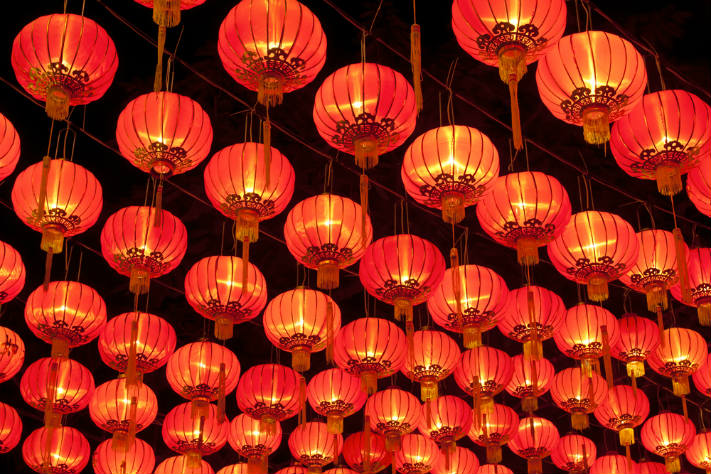
When to go
We'll tell you the best time to visit Beijing. Take notes and start preparing your trip!


Do you feel like travelling?
Discover the best flight offers to fly to Beijing, in China

The History of Carnival in Venice
Like most ancient festivals the Venice Carnival comes from somewhat dubious origins. Reliable information sources on the subject contrast each other like an ornate silver mask hovering above the putrid sewage-filled canals in Italy’s most famous city.
Carnival (‘farewell to meat’ in Latin) developed alongside the Catholic festival of Lent - a 40 day period of sorrowful reflection and penance via abstinence from eggs, dairy, fruit, and meat. It commemorates the 40 days Jesus spent fasting in the desert. But this celebratory period wouldn’t have gained traction in Venice without a good old fashioned victory celebration.
The Most Serene Republic of Venice had just defeated Ulrich II (Patriarch of Aquileia) in a vicious 1162 war and the people of Venice wanted an excuse to gather and dance in Saint Mark’s Square. A captured Ulrich II was let go on the condition he pay tribute to Venice with 12 loaves of bread, 12 pigs, and 1 bull - sparking a tradition of slaughtering the pigs and the bull every year on Shrove Tuesday.
The popularity, much like the influence of the Venice city state, grew over the years and soon Venice at Carnival time became a playground for the rich. Theatres, upscale cafes, and wine shops popped up like weeds and fortunes were spent and made overnight. Eventually the classic long-nosed Venetian carnival masks made their appearance - a way to make the differentiation between noble and common people impossible.
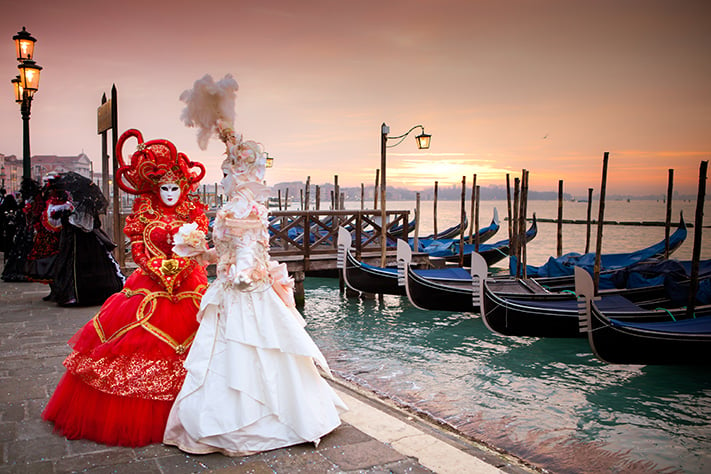
Fun Facts
The current Venice Carnival goes from the 12th day of Lent (2017 begins March 1st) up to Shrove Tuesday. Over 3 million annual visitors head to Italy for the revelry during this period making it one of the biggest festivals in the world.
The old adage ‘the show must go on’ may have originated here - it’s said that traditionally Carnival could not be stopped for any reason, even the death of a Doge (the ruler of the Venetian Republic). In fact, when Doge Paolo Renier passed away on February 13th 1789 the news was kept secret and not communicated until festivities ended on March 2nd.
The aforementioned lack of inequality associated with Venetian carnival masks became a springboard for something much more sinister. Venice at Carnival time became a haven for all sorts of lewd behaviour and gambling dens and brothels became an integral part of the party.

Carnival almost went extinct in the 18th Century when Venice was conquered by the King of Austria who banned the festival outright. Though it had started to come back a similar ban was instituted by Mussolini’s Italy in the 1930’s. Only in 1979 did the city of Venice get together to restart the festival.
The classic Stanley Kubrick film Eyes Wide Shut prominently features masks bought from Venice mask shops Ca' Macana and Il Canovaccio. Speaking of mask shops - Venetian carnival mask shops outnumber both butchers and greengrocers in Venice.
Each year has a distinct theme and some of the most recent Venice Carnivals have been centered around Paris, Naples, Eastern cultures, Casanova, Fellini and more.
Trends
Something often overlooked by tourists and more popular with locals are the opening water parades. This seemingly never-ending procession of decorated boats along the Canale di Cannaregio can be seen either by day or by night.
If you’re in Venice early tourists make sure to see Il Volo dell’Angelo (‘The Flight of the Angel’) which takes place on the first Sunday at noon in Saint Mark’s Square at the top of the famous Bell Tower.
This breathtaking event involves an acrobat leaping off the 99m tall building and landing right in the middle of the square. Get there no later than 11 AM or you’ll be on the outside looking in.
It might be lent but that doesn’t mean you should stop eating. Nobody will blame you for eating some of Venice’s famous Carnival frittelle (fritters). These doughnutty things come plain or filled with chocolate, apples, or Marsala flavoured pastry creme. The food and wine booths that pop up all over the city are a can’t miss.
Expect to try something delicious at virtually every corner, especially the Venetian version of tapas served on polenta called cicchetti.
Going to Venice at Carnival also means free entertainment. All throughout the city from about 2PM there are live music concerts, comedians, parades, and even a circus. The centre of the action is The Grand Foyer of San Marco.
The traditional closing ceremony called ‘The Rowing of the Silence’ is an eerie procession of gondolas and row boats following the lone, crying trumpet of the first boat. Upon arrival to St Mark’s Basin hundreds of bright balloons are released.
Tips
You’ve seen all the photos. The elaborate mask and dress combinations straight out of the Italian Renaissance speak of an unreachable sophistication for the average tourist on a budget, or more importantly a miniscule 10kg carry-on bag from the depths of discount airline hell - how the heck is that pointy nose gonna fit?
The good news is you don’t have to bring anything. Traditional costumes can be rented for about 50 euro a day throughout the city. The even better news? Most common Italians feel no need to indulge in the pomp and circumstance and their costume choices are no classier than an American Halloween party in Wichita Kansas. Zombie Donald Trump? Let’s go! Bring your dusty old Halloween costume to save money. You’ll fit in all the same.
Whether we refer to more traditional or more modern versions, if there’s only a few truths in the world then ‘costumes do not have pockets’ is probably one of them. At least one member of your party should buy a small handbag or bumbag to conceal valuables. At Venice Carnival you need cover up for the cold. Italy might be Europe’s garden but that garden, especially in the North, tends to freeze over in winter! A pair of thick trousers and multiple layers up top is advised.
Once you’re all geared up you should probably understand something: Carnival is not a good time for sightseeing. The majority of the 3 million annual visitors are (seriously, really) more interested in photographing partygoers than monuments. If you’re dressed up be prepared to be photographed and have absolutely no expectations of seeing anything Venice has to offer at any depth.
If you want to check out the city do it in the morning or come a few days before or after the festival.
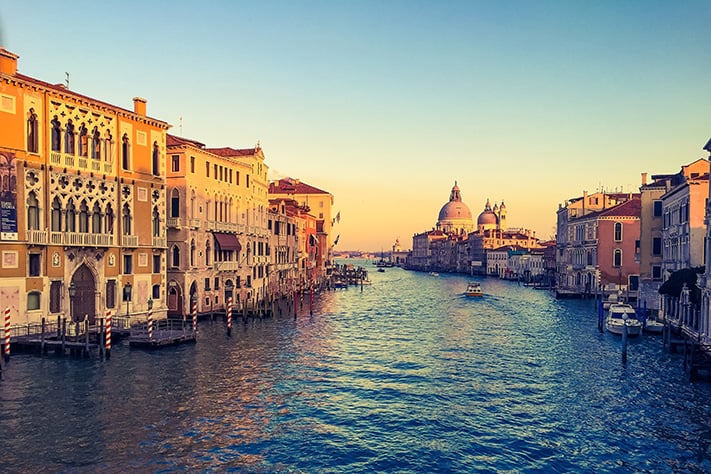
When to go
We'll tell you the best time to visit Venice. Take notes and start preparing your roadtrip!


Do you feel like travelling?
Discover the best flight offers to fly to Venice, in Italy

The History of San Fermin Festival
To understand the origin of the San Fermin Festival (or Sanfermines to locals) you have to go back to the birth of Fermin - son of a Roman with senatorial rank in 3rd Century Pamplona. Baptised by Saturninus at the ‘Small Well of Saint Cernin’, ordained as a priest in Toulouse, and later became the first bishop of Pamplona before being martyred either by beheading, or as the folks in Pamplona claim, by being tied by the legs to a bull and dragged to death. The miracle which would grant him sainthood came when a sweet odor rose from his grave and caused ice and snow to melt, the sick to be healed, and trees to droop toward his grave.
The modern celebration came from the combination of two festivals. First, it came from the commercial and secular fairs held at the beginning of summer involving cattle merchants that later turned into bullfighting. Second, from the the religious ceremonies honouring Saint Fermin. Though San Fermin was originally celebrated on October 10th it was decided to move the festival to July to take advantage of better weather. Over the years the week of July 7th became a time of tournaments, theater, dances, fireworks, and bullfights.
It took until the 17th Century for bull running (and the excessive drinking and presence of foreigners) to take on a prominent role in the festival - the result of showoff youngsters jumping in front of bulls being transported from rural areas to the bullrings. It was only after Hemingway’s depiction of the festival in legendary novel The Sun Also Rises that Sanfermines become an international must-see.

Fun Facts
We’ve come a long way from the cattle trading and miracles of saints of the Middle Ages to the throngs of tourists drowning in cheap red wine and clinging to the 75 euro a night lifesaver hostel bunks of today.
As far as statistics go your morbid curiosity is probably asking exactly how many people have met their ultimate demise in the festival’s modern history - the answer is a surprisingly few 15 deaths since 1910 and only 3 of them have occurred since 1980. Though locals boast of their experience and the idiocy of tourists you’ll be happy to know the odds are on your side: an American in 1995 was the only tourist fatality.
One little known fact about the festivities is that the traditional red bandanas aren’t meant to anger the bull. For starters the colour is of little consequence since bulls are colourblind. The traditional white pants and shirts with red bandana is said to honour San Fermin with white representing sainthood and red the martyrdom. Another idea is the colours are meant to honour local butchers, who had a prominent hand in the beginning of the festival.
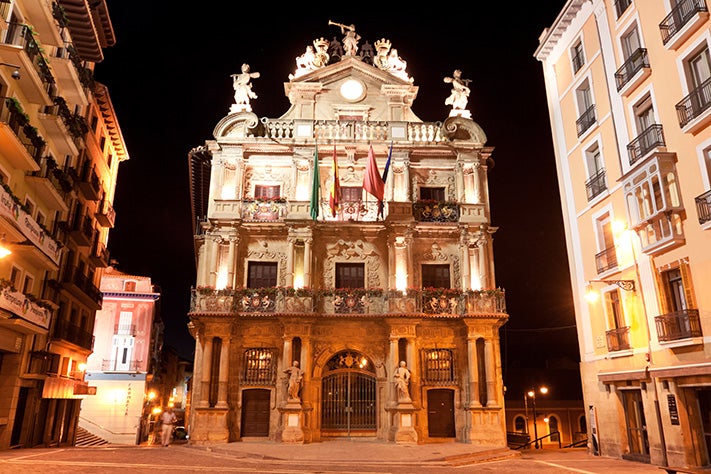
Today more than a million visitors flood the streets of Pamplona every year to watch the excitement. Of course, many are surprised to learn what an anticlimax the actual run is - a tiny 957 yard stretch of street is devoted to the mad dash with the average runner only covering a small fraction of it, around 20-30 seconds each. In all the whole run is over in three minutes.
Trends
If you’re there on day 1 head to Plaza Ayutamiento at noon for the opening ceremony called el chupinazo, ‘loud bang’ in Spanish. Here, the nine day party gets kicked off with a rocket launched from city hall as a nominated guest screams “Viva San Fermin! Gora San Fermin!” and the crowd responds” Viva!” and “Gora!” while simultaneously uncorking hundreds of bottles of champagne and dousing everyone in sight.
The explosion of fireworks here is a sight to behold for those not blinded by spraying champagne.
It’s no secret that the bull run is more than just a run. The bulls, without softening the cruel reality that awaits them, are being lead through the streets and down into the main bullring where they’ll later ‘participate’ in a traditional Spanish bullfight that they won’t win.
Morals aside, it’s hard to argue that you won’t see a spectacle like this anywhere else in the world. 90% of the tickets for the bullfights are already sold out but if you line up at 9 PM the day before in Plaza de Los Toros you should be able to cop a few.
Tips
We’ll start with some tips for the brave. If you’re planning to run you’ll need all the help you can get and what better way to do that these days than an app? The Bullrunning Trainer app for Iphone runs a mock simulation of the run based on your input and calculates the risk involved. As far as golden rules go you’ll be (surprisingly) best advised to run slowly since bull reactions are mostly triggered by movement. You could also save yourself by staying in the fetal position after a fall - it’s said that most deaths arise when the fallen try to get back up, leaving themselves open to being gored.
Less brave? Head into the festival knowing one thing: you won’t see much from street level. There are tens of thousands of people huddling behind the fences of a tiny stretch of street. If you want to get a great view of the run you’ll need to see it from a balcony of an apartment - the local Tourist Office is kind enough to make a list of Pamplonians wishing to rent out their balconies to tourists wishing to see the spectacle. You’ll be happy you did even if prices are less than kind.
Finding accommodation without booking in advance is impossible. You’ll see hundreds of tourists ‘sleeping’ in the streets due to the extreme lack of beds over the festival. Don’t be one of them. Please. Especially if you’re checking out the festival on weekends you should be booking your accommodation well in advance.
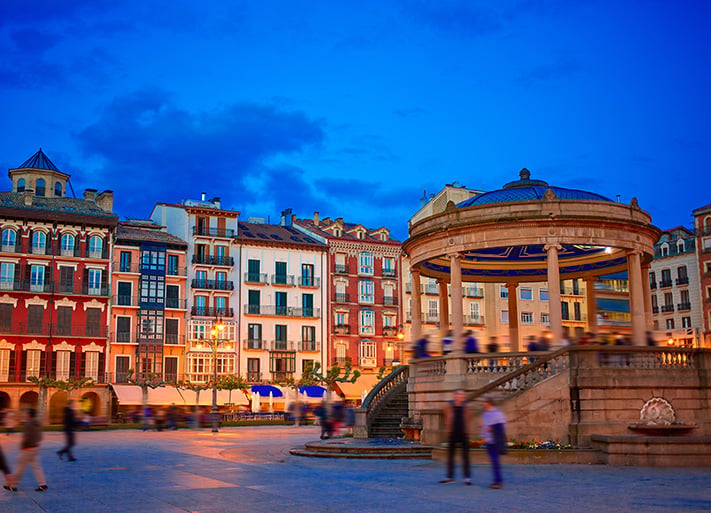
When to go
We'll tell you the best time to visit Pamplona. Take notes and start preparing your trip!


Do you feel like travelling?
Discover the best flight offers to fly to Pamplona, in Spain
Related blog articles
These blog articles might interest you...
